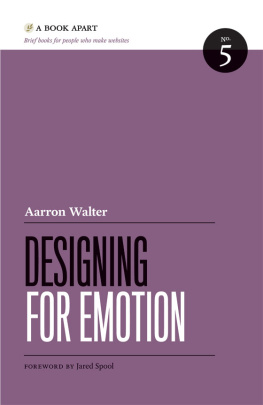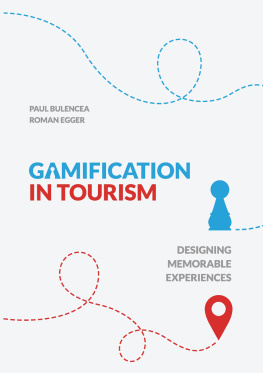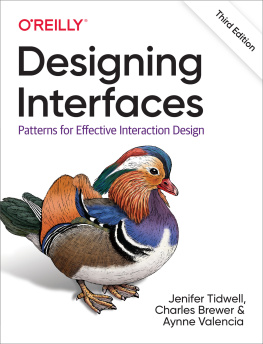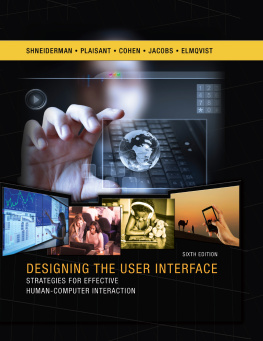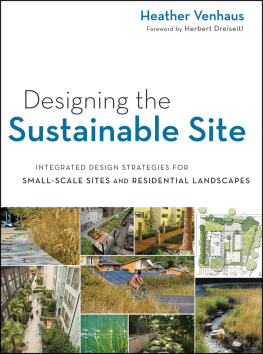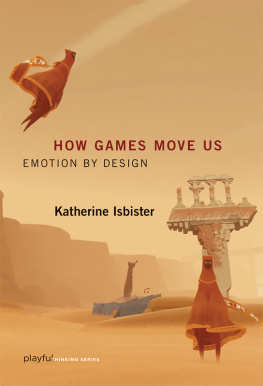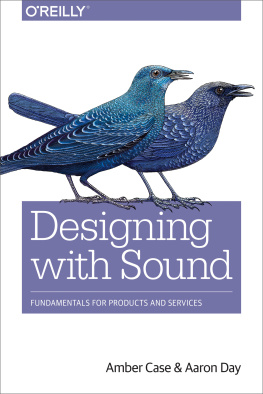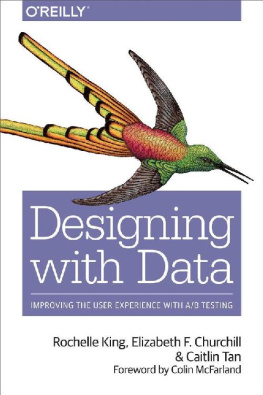Aaron Walter - Designing for Emotion
Here you can read online Aaron Walter - Designing for Emotion full text of the book (entire story) in english for free. Download pdf and epub, get meaning, cover and reviews about this ebook. year: 2011, publisher: A Book Apart, genre: Computer. Description of the work, (preface) as well as reviews are available. Best literature library LitArk.com created for fans of good reading and offers a wide selection of genres:
Romance novel
Science fiction
Adventure
Detective
Science
History
Home and family
Prose
Art
Politics
Computer
Non-fiction
Religion
Business
Children
Humor
Choose a favorite category and find really read worthwhile books. Enjoy immersion in the world of imagination, feel the emotions of the characters or learn something new for yourself, make an fascinating discovery.
- Book:Designing for Emotion
- Author:
- Publisher:A Book Apart
- Genre:
- Year:2011
- Rating:4 / 5
- Favourites:Add to favourites
- Your mark:
- 80
- 1
- 2
- 3
- 4
- 5
Designing for Emotion: summary, description and annotation
We offer to read an annotation, description, summary or preface (depends on what the author of the book "Designing for Emotion" wrote himself). If you haven't found the necessary information about the book — write in the comments, we will try to find it.
Designing for Emotion — read online for free the complete book (whole text) full work
Below is the text of the book, divided by pages. System saving the place of the last page read, allows you to conveniently read the book "Designing for Emotion" online for free, without having to search again every time where you left off. Put a bookmark, and you can go to the page where you finished reading at any time.
Font size:
Interval:
Bookmark:
For Jamie & Olivier, who inspire the most
meaningful emotional experiences in my life.
We want our work to stand out from the rest. We want people to have such a great experience that they feel the need to talk about it to everyone. We want what we make to be remarkable.
Often those seeking remarkability get it for just a moment. Some have achieved their goal of joyful office watercooler discussions by creating a thiry-second Superbowl Spot with something as simple as a handful of slothful individuals answering their phone with an exaggerated WHAAATS AAAWWP? Others get it with a viral video of dogs on skateboards. But these are just quick flashes in the pan.
The real payoff comes when we can make that remarkability last. When we can make people continually feel our work is worthy of discussion. Whenfor weeks, months, maybe even yearsthe people who engage with our work continue to sing its praises to everybody they meet.
Long-term remarkability translates into the holy grail of the advertising world: word of mouth. When we reach this pinacle of mind-share success, we see our popularity grow, along with the revenues from whichever business model backs it.
But remarkability only happens when weve achieved another plateau: delight. People only voluntarily recommend that which is truly delightful. If we want to achieve long-term remarkability, we need to build in long-term delight.
In the pages that follow, Aarron does a (dare I say?) remarkable job of getting us started on creating designs that bring with them an emotional attachment. And with his help, we can sustain the joy to get the long-term effects were seeking.
Heed Aarrons words carefully. Hes put a lot of research and theory into an easily accessible package. A package that will get you started on your own journey to creating designs that inspire a positive emotional response in your users. That journey will take you beyond remarkable.
Jared Spool
CEO and Founding Principal, User Interface Engineering
Copyright 2011 Aarron Walter
All rights reserved
Publisher: Jeffrey Zeldman
Designer: Jason Santa Maria
Managing Editor: Mandy Brown
Editor: Krista Stevens
Copyeditor: Rose Weisburd
Compositor: Rob Weychert
ISBN 978-1-937557-01-1
A Book Apart
New York, New York
http://abookapart.com
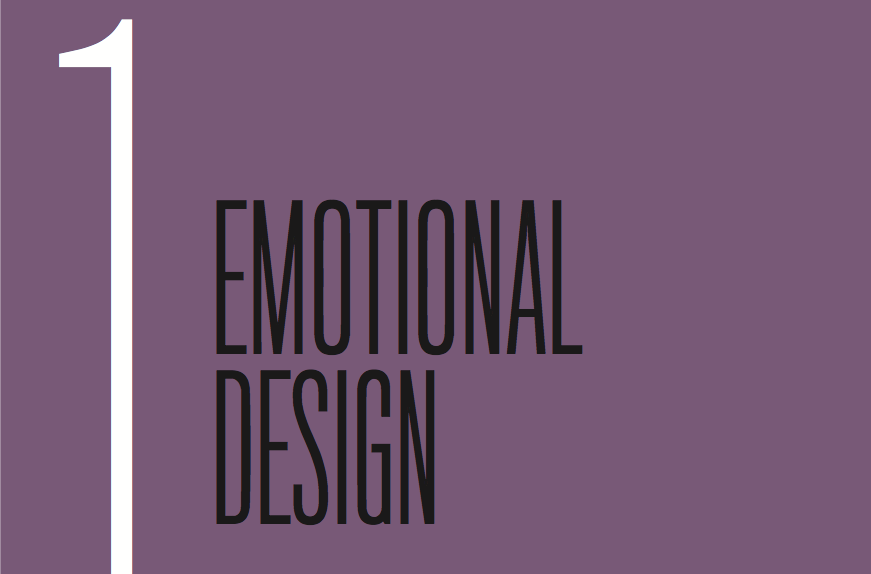
Powered by a chain reaction of ideas and innovations, a revolution of industry swept the western hemisphere in the late eighteenth and nineteenth centuries. In a relatively short time, we discovered ways to transform mined materials into manufacturing devices, transportation systems, and agricultural tools that fueled the twentieth centurys explosive innovations. Inventions like the cotton gin, machine tools, the steam engine, the telegraph, and the telephone promised a future filled with opportunity and prosperity.
Though the industrial revolution sprang from a utopian vision of human progress, humans were so often the ones left behind. Skilled craftsmen like blacksmiths, cobblers, tinsmiths, weavers, and many others slowly forfeited their trade to factories that could produce goods faster and at a lower cost. As the machine found its place in our world, the human hands presence in everyday objects slowly faded.
But some challenged the blind march toward progress. As mass production expanded in the mid-nineteenth century, the Arts and Crafts movement sought to preserve the craftsmans role in domestic goods production, and with it the human touch. The founders of the Arts and Crafts movement revered the things they designed, built, and used every day. They recognized that a craftsman leaves a bit of themselves in their work, a true gift that can be enjoyed for many years.
In the present day, we can see a few parallels. In a quest for higher crop yields and lower production costs, farms have become headless corporations pitting profits against human welfare. But local farmers are finding new markets as consumers search for food produced by people for people. While big-box stores proliferate disposable mass-market goods, websites like Etsy and Kickstarter are empowering artists, craftspeople, and DIY inventors who sell goods theyve designed and created. And their customers love the experience. When you buy from an independent craftsman, you support creative thinking and families (not corporations), and you gain the opportunity to live with an object that has a story. That feels good.
We web designers find ourselves in a similar situation. Theres plenty of opportunity to build fast and cheap sites with no reverence for craft or the relationship we build with our audience. We could create new projects with stock photography, boilerplate templates, and one-size-fits-all copy. We could reduce our industry to a commodities race, like those who manufactured the industrial revolution. There is a market for that kind of work.
Or we could follow a different path, one paved by the artists, designers, and architects of the Arts and Crafts movement, who believed that preserving the human touch and showing ourselves in our work isnt optional. Its essential.
Im delighted to report that many on the web are already on this path. Ill guide you through examples of the principles that emotional design visionaries use not only to build a human connection with their audience, but also to fuel their success. Theres a common thread through these principlesemotional designwhich uses psychology and craftsmanship to create an experience for users that makes them feel like theres a person, not a machine, at the other end of the connection.
Its taken our medium time to mature to where we can begin exploring emotional design and talking to our audience with a new voice. Once upon a time, on a web not so unlike the one we enjoy today, we spoke much differently because we hadnt yet learned to be ourselves. We were still trying to be the machine.
The web had a rocky start in building emotional connections. It gets gold stars for connecting people in far-off lands, but the necessities of academia were the mother of its inventionsa dry origin indeed. As business pioneers discovered new watering holes, the web quickly became a breeding ground of dot-com bubble thinking. I remember writing copy for my personal website in the late 1990s using the royal we, trying to create the perception that I was a big company when the guy behind those words was in his bedroom in smelly pajamas trying to figure out HTML. I wasnt trying to be meI was trying to be like the other big players out there.
But something happened to that trend in the middle of the naughts. All of those people who were laid off or fired after the dot-com bubble burst either started new companies or retreated to their bedrooms and stayed in pajamas to make new websites and applications.
Maybe it was because a boss wasnt standing over their shoulder, or maybe they needed to do something to lift their spirits, but the voice of these new sites was decidedly more personal.
During this period, Flickr launched with the famously familiar and endearing copy that puts smiles on so many faces. Facebook and Twitter surfaced and influenced the voice of the web. These new social tools allowed users to share the minutiae of daily life. That may not sound terribly profound, but it represents a major change in the way that we communicate on the web. Whereas professionalism might have buttoned down our communiqus before social networks, today conversations are often more true to the way that wed speak to friends. Of course, a little moderation is sometimes in order (Im looking at you, Rainn Wilson, http://bkaprt.com/de/1; fig 1.1 ).
Next pageFont size:
Interval:
Bookmark:
Similar books «Designing for Emotion»
Look at similar books to Designing for Emotion. We have selected literature similar in name and meaning in the hope of providing readers with more options to find new, interesting, not yet read works.
Discussion, reviews of the book Designing for Emotion and just readers' own opinions. Leave your comments, write what you think about the work, its meaning or the main characters. Specify what exactly you liked and what you didn't like, and why you think so.

